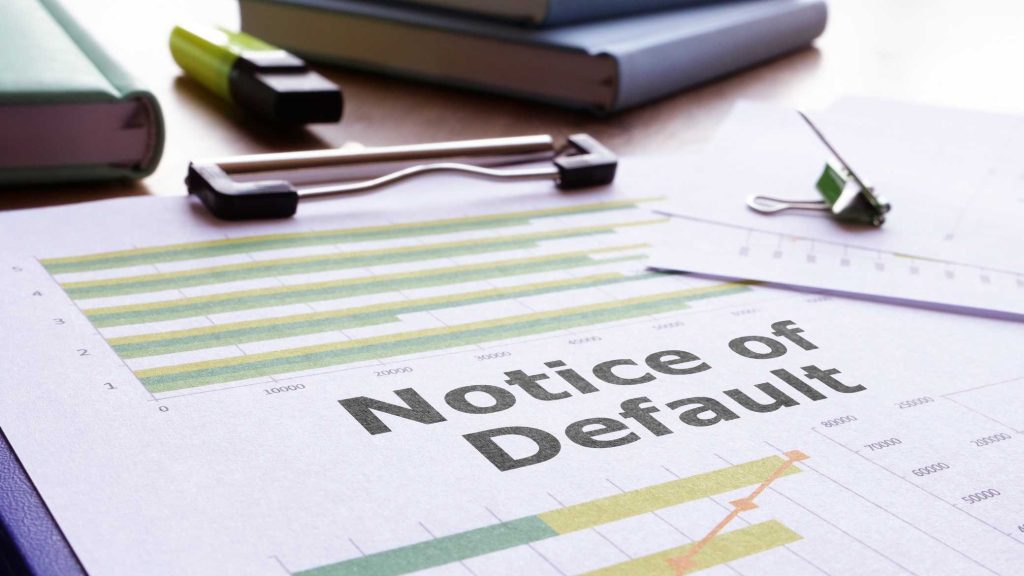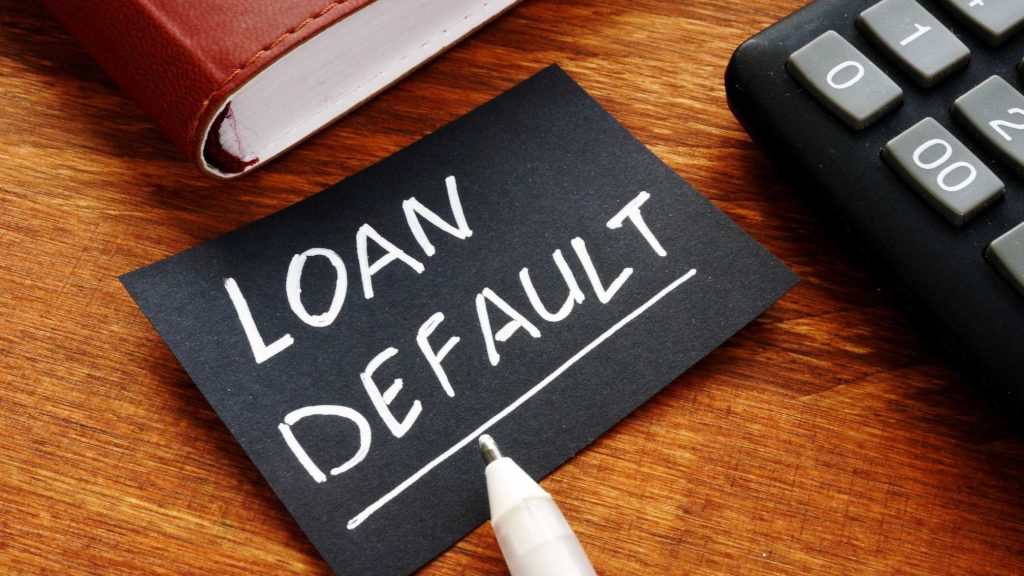What Happens If You Default on a Personal Loan ? : Comprehensive Guide 2025
Default on a Personal Loan : In the ever-evolving financial landscape of 2025, personal loans remain one of the most accessible forms of credit for individuals in India and around the world. They offer quick funds for everything from medical emergencies and wedding expenses to home renovations and debt consolidation. However, with easy access to credit comes a major financial responsibility—timely repayment. Unfortunately, not all borrowers manage to stick to the agreed EMI schedules, and when this happens, loan default becomes a looming reality. But what exactly happens if you default on a personal loan in 2025? What are the consequences? Can it be fixed?
Table of Contents
This guide explains every aspect of personal loan default and its impact on your credit, legal standing, and financial future.
What is a Loan Default?

A loan default occurs when a borrower fails to repay the loan amount as agreed upon in the loan contract. For personal loans, this typically means missing EMIs (Equated Monthly Installments) over a period of time, usually 90 days or more, depending on the lender’s policies.
In 2025, digital lenders, NBFCs (Non-Banking Financial Companies), and banks closely track your repayment behavior using AI-backed credit monitoring systems. If you consistently miss payments, these platforms quickly flag your account as high-risk, which triggers a chain of financial and legal consequences.
Difference Between Late Payment and Default
Before we explore the full impact of defaulting on a personal loan, it’s essential to understand the distinction between a late payment and a loan default:
- Late Payment: Missing one or two EMIs but catching up soon. Often results in late fees or penalties, but not full default status.
- Loan Default: Missing payments for 90 days or more, often leading to account classification as NPA (Non-Performing Asset) by the lender.
Also Read : 5 Times You Should Never Take a Personal Loan
While both damage your credit score, a loan default has far-reaching consequences compared to a one-off late payment.
Stages Leading to Loan Default
In 2025, lenders use automated and multi-stage systems to monitor borrowers. The default process generally follows these stages:
- Day 1–30: Payment Missed
- Reminder SMS and email from the lender
- Late fees are applied
- Credit score drops slightly
- Day 31–60: Continued Missed EMIs
- Escalated reminders via calls, WhatsApp, and in-app notifications
- Additional penalties added
- Credit bureau notified
- Day 61–90: Serious Delinquency
- Account marked as delinquent
- Pre-recovery department steps in
- Loan account tagged for “watchlist” or “at risk” category
- Day 91+: Default
- Account classified as Non-Performing Asset (NPA)
- Recovery proceedings begin
- Legal notices may be sent
- Negative reporting to CIBIL, Experian, CRIF, and other bureaus
Consequences of Defaulting on a Personal Loan in 2025
Now let’s break down the major consequences you’ll face if you default on a personal loan.
1. Credit Score Damage
Your credit score is the first and most severe casualty when you default on a personal loan.
Impact:
- A drop of 75 to 150 points or more depending on your credit history
- A default stays on your CIBIL/Experian report for up to 7 years
- Reduced chances of getting future loans, credit cards, or EMIs
- Difficulty getting approved for even BNPL (Buy Now Pay Later) services
- Inability to access pre-approved loan offers or low-interest rates
Lenders in 2025 use real-time credit scoring tools, meaning your score could drop within days of missing multiple EMIs.
2. Legal Action by the Lender
In India, while personal loans are unsecured, that doesn’t mean you’re legally free after defaulting.
What Legal Steps Can a Lender Take?
- Issue Legal Notice under the Indian Contract Act, 1872
- File a suit under the Negotiable Instruments Act (Sec 138) if cheques were bounced
- Initiate civil recovery proceedings
- Hire a recovery agent (must be RBI-compliant and not indulge in harassment)
- If the amount is large, take you to the Debt Recovery Tribunal (DRT)
In extreme cases, the borrower could face civil imprisonment, although this is rare and typically only for willful defaulters.
3. Harassment by Recovery Agents
Although RBI guidelines in 2025 prohibit harassment, some unregulated NBFCs and fintechs may employ aggressive recovery tactics.
Recovery Harassment May Include:
- Daily calls and home visits
- Contacting family, friends, or workplace
- Public shaming (though illegal)
- Threats (can be legally challenged)
If you face such harassment, you can file complaints with the Banking Ombudsman or even approach the consumer court.
4. Seizure of Assets (In Certain Conditions)
While personal loans are unsecured, if you took the loan against a collateral like gold, FD, or securities, those can be seized.
Some lenders may also offer secured personal loans in 2025 using digital assets, mutual funds, or crypto as collateral. If you default:
- Your collateral will be liquidated
- You may still owe the remaining balance after liquidation
5. Difficulty in Getting Future Loans or Jobs

Lenders in 2025 increasingly rely on alternative credit scoring and background checks.
Defaulting may affect your:
- Home loan, car loan, or education loan approvals
- Employment (MNCs and banks check credit history)
- Visa applications for countries that verify financial credibility
You may also lose access to low-interest fintech loans, credit cards, and even some EMI-based shopping platforms like Amazon Pay Later or Flipkart Pay Later.
6. Increased Interest and Penalty Charges
Lenders charge penalties on missed EMIs, and interest continues to accumulate.
For example:
- ₹5 lakh loan at 15% for 3 years could grow to ₹6–7 lakh with penalties
- You may be charged 3% to 6% monthly penalty interest
- Processing fees, legal charges, and bounce charges add up
This snowballs the total liability and makes repayment harder.
7. Loan Settlement Becomes the Only Option
If you’re unable to repay the full amount, some lenders offer a settlement option.
Loan Settlement:
- You pay a negotiated lump sum amount (less than total due)
- Loan is marked as “Settled” not “Closed” in your credit report
- Damages your score further and restricts access to future credit
Loan settlement is a last resort, not a clean solution.
8. Continuous Collection Efforts
Even after 5 or 6 years, lenders can legally pursue you for unpaid dues, unless the loan is written off.
In India, the limitation period is typically 3 years, but debt recovery efforts may continue informally beyond that, especially by NBFCs and private collectors.
What To Do If You’re Struggling with Loan Repayment in 2025

If you see yourself moving toward default, don’t wait. Take proactive measures to control the damage.
1. Contact Your Lender Immediately
Inform them about your situation. In 2025, many lenders have financial hardship programs offering:
- Temporary EMI holiday (moratorium)
- Lower EMI plans
- Loan restructuring
- Longer repayment tenures
2. Opt for Loan Restructuring
Restructuring can help you renegotiate your loan terms.
Benefits:
- Lower EMI burden
- Reduced interest temporarily
- Avoids credit report damage
- Keeps the account “standard” and out of NPA
Downside:
- May incur charges or longer interest payout
3. Refinance Your Loan
Take a debt consolidation loan from another lender with lower interest and pay off the defaulted one.
Fintechs like Navi, Bajaj Finserv, or MoneyTap offer balance transfer options even to borrowers with moderate scores.
4. Use Emergency Funds or Assets
If you have:
- Fixed deposits
- Mutual funds
- Crypto holdings
- EPF/PPF loans
- Loan against LIC policies
Use these to repay overdue EMIs and restore your repayment record.
5. Get Financial Counseling
In 2025, many startups offer AI-driven debt advisory tools and online credit counselors. Seek help from:
- CreditMantri
- CRED Coach
- OneScore Debt Help
- Indian Credit Counseling Foundation (ICCF)
They can help restructure your debts and negotiate with lenders.
6. Avoid New Loans Until the Issue is Fixed
Taking new loans to repay old ones (debt spiral) is extremely risky. It increases your financial burden and may push you deeper into default.
High-Reaching Keywords to Target in 2025
Use these keywords to rank for SEO and attract traffic if you’re publishing content or marketing in this niche:
- what happens if i default on personal loan
- personal loan default consequences India
- personal loan repayment failure effects
- legal action for personal loan default
- cibil score drop after personal loan default
- loan default in India rules
- missed EMI personal loan 2025
- can I go to jail for loan default
- how to deal with loan recovery agents
- personal loan settlement impact on cibil
- unsecured loan recovery process
- how to restructure a personal loan
- personal loan defaulter rights in India
- what happens after 90 days of loan default
- how to improve credit score after loan default
Conclusion

Defaulting on a personal loan is a serious financial event that can haunt your credit history for years, limit your access to future loans, and even invite legal or recovery action. In 2025, where digital tracking and AI-powered credit systems are more stringent than ever, ignoring a loan default can cause long-term financial damage.
Buy Now : Beginner to Advanced Option Trading Strategy
But there is hope and help. By proactively communicating with your lender, restructuring your loan, seeking financial advice, or even refinancing, you can manage the situation and gradually rebuild your financial health. Personal loan defaults are preventable, and if you act early, recoverable too.
Being financially aware, informed, and disciplined is the key to surviving and thriving in the digital credit age of 2025.
Disclaimer : This guide is for educational purposes only and should not be considered legal or financial advice. Individual situations may vary. Please consult your lender or a certified credit counselor before making any loan decisions.
Keywords : Default on a Personal Loan – Default on a Personal Loan 2025 – Default on a Personal Loan Guide



